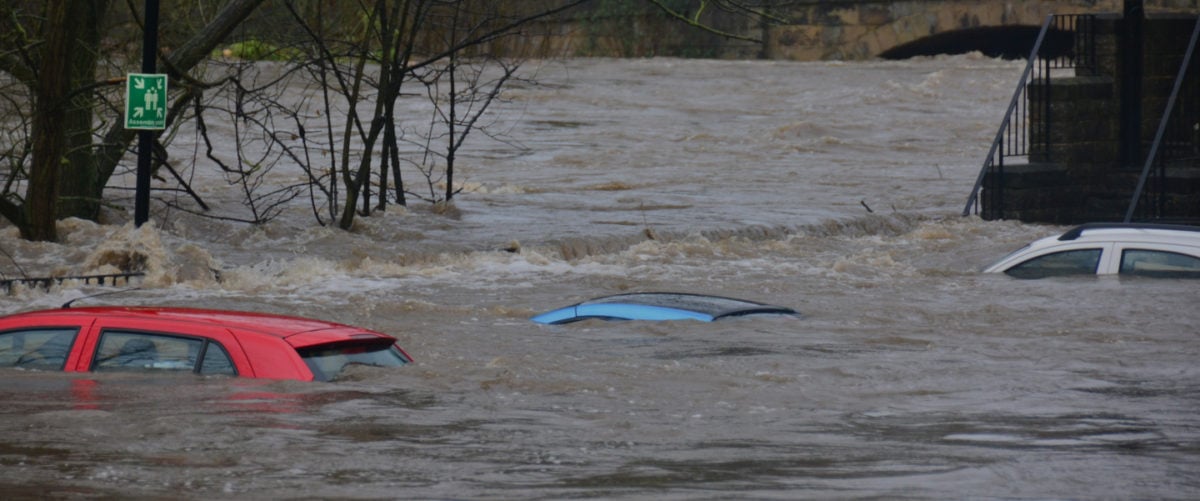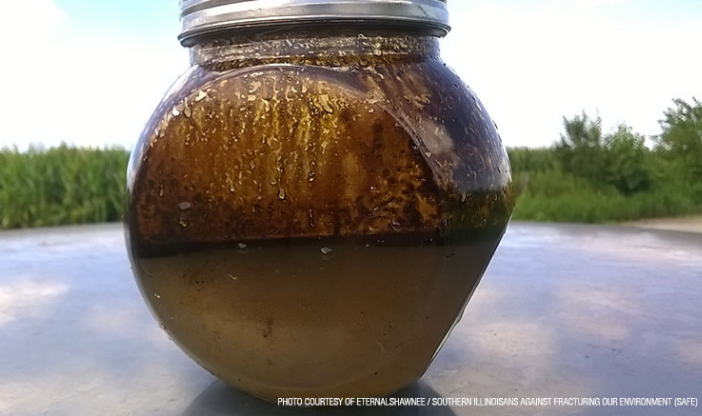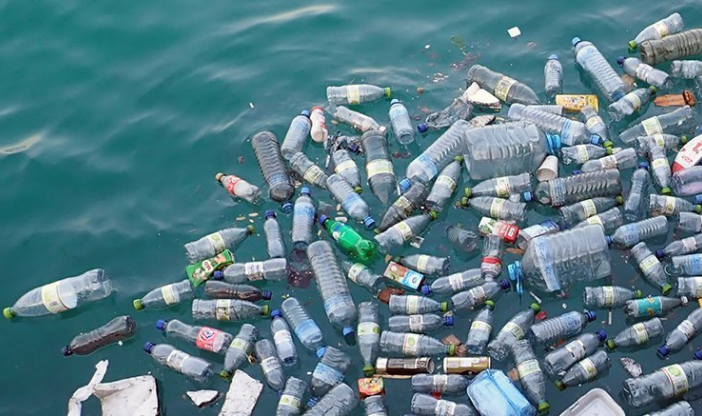9 Ways Fracking Is The Worst — Climate Change Is Top Of The List
Published Oct 15, 2021

Climate instability is a threat to millions of lives across our planet, and we simply can’t let the fossil fuel industry push for more fracking.
Updated 3/31/2023
How many people really know what fracking is? It’s hit the news cycle thanks to the 2020 presidential election, and Google searches for “fracking” peaked during that season. But the buzz often skips over crucial details about this technology — like all the problems it causes for our climate and our communities.
Fracking refers to the process of drilling down into the earth and injecting water, sand, and chemicals into rock at high pressure. This pressure cracks the rock, which allows the once-trapped oil and gas to flow to the surface.
Big oil and gas companies have heralded fracked gas as a “green” alternative to coal, and as a “bridge fuel” toward more renewable energy. But they’re lying to us. They’ve known for decades just how dangerous fracking is. The only thing it’s a bridge to is climate chaos.
Here Are 9 Reasons Why Fracking is Evil
1. Fracking accelerates climate change.
Natural gas consists mostly of the potent climate polluter methane, which traps about 86 times more heat in the atmosphere than carbon dioxide. Methane leaks from oil and gas operations are the number-one source of human-caused methane pollution in the country.
These leaks also make fracked gas way worse for the climate than industry executives say. In fact, leaks make fracking’s climate impact worse than coal’s.
Fracked gas is no “bridge fuel” to renewables. In fact, over the years fossil fuel production has grown alongside renewables. The bottom line: fracking won’t save our planet and will make climate change even more destructive in the coming decades.
2. Fracking pollutes drinking water.
Across the country — from Wyoming to Texas to Pennsylvania — fracking has polluted essential drinking water sources. In the most dire cases, communities have had to truck water to their homes when well water became too polluted to drink.
In 2016, the U.S. Environmental Protection Agency (EPA) confirmed “widespread, systemic” impacts on drinking water from fracking. These pollutants include methane and toxic chemicals that endanger community health and safety.
3. Fracking produces toxic — even radioactive — wastewater.
Some of the chemical-laced water pumped underground during fracking return to the surface. This surface wastewater contains not only the original fracking fluids, but also potentially dangerous levels of harmful underground contaminants and radioactive material.
These chemicals can cause cancer and harm sensory organs and the respiratory system. They can also damage the nervous, immune, and cardiovascular systems.

4. Fracking makes people sick.
Dozens of scientific studies have confirmed the firsthand accounts of frontline communities: Fracking can make people sick. This is particularly true for people living close to operations, which expose them to air pollution or water contamination.
Researchers have linked fracking to health problems including difficulty breathing, asthma, throat and nose irritation, skin problems, abdominal issues, headaches, nosebleeds, eye irritation, cancer, and hair loss. They’ve also found links between fracking and reproductive health problems like infertility, miscarriages, and birth defects.
Fracking also plagues its own workers with health issues. It exposes them to hazardous chemicals, radioactive toxins, extreme temperatures, airborne pollutants, and respiratory irritants.
5. Federal environmental laws don’t regulate fracking.
The 2005 Energy Policy Act — laden with giveaways for dirty energy — explicitly exempted fracking from key provisions of the Safe Drinking Water Act, allowing companies to hide the chemical contents of their drilling fluid.
This “Halliburton Loophole” has prevented federal oversight of the perilous, polluting, and poisoning practices of fracking. Instead, state governments regulate fracking, and most allow oil and gas companies to conceal the chemicals they use as so-called “trade secrets.”
Distressingly, fracking companies keep secret 10% of the almost 700 chemicals they use. And of what chemicals we do know, 14 are known or possible human carcinogens. Many are also linked to developmental health and reproductive problems.
6. Fracking and the disposal of fracking wastewater cause earthquakes.
Fracking-related tremors and earthquakes have occurred across North America, thanks to both fracking itself and the injection of wastewater underground for disposal. Wastewater injections are most responsible for causing big quakes we can feel.
In Oklahoma, these injections have triggered a sudden and violent increase in frackquakes. From 1975 to 2008, Oklahoma averaged only one to three 3.0 magnitude or greater earthquakes annually. (3.0 magnitude is the minimum level we can feel.)
In 2009, the state had 20 of these 3.0 magnitude or greater earthquakes. In 2015, well into the state’s fracking frenzy, the annual number exploded to 902.
7. Fracking is driving a huge petrochemical and plastics boom.
This may come as a surprise to some, but plastic can be made from fracked gas. That has led to a sneaky plastics boom, as our fracking boom created a glut of gas desperate for new markets.
The result: expanding petrochemical and plastics operations, which have driven more plastic onto store shelves. Much of that is single-use plastic that will end up in landfills. It’s a vicious cycle in which more fracking drives more petrochemical production and more plastics manufacturing, which in turn encourages more fracking.
This plastic doesn’t decompose and has polluted rivers, landscapes, oceans, and marine life. Microplastic molecules now end up in everything — sea salt, bottled water, organic compost, and much more. On average, people are consuming about 5 grams of this residual plastic weekly — roughly the same as one credit card.
Moreover, these petrochemical and plastics plants emit massive amounts of air and climate pollutants. For decades, they have endangered frontline communities and are now expanding even more in the Gulf Coast and Appalachia.

8. Fracking is growing pipeline infrastructure across the country.
The oil and gas industry is expanding its sprawling maze of pipelines to transport fracked oil and gas to power plants, export facilities, petrochemical factories and more. This labyrinth of built and proposed pipelines leaks massive volumes of methane and will lock in our dependence on fossil fuels for decades.
Moreover, pipelines pose huge health hazards to local communities and ecosystems. Companies bulldoze over local opposition, including Native American tribes, local landowners, farmers, and conservationists.
Pipeline construction also threatens wildlife habitats and the environment. It compromises soil quality, causes erosion, and creates dangerous sinkholes. It pollutes the air and contaminates streams, rivers, and aquifers. And once a pipeline is built, unlucky residents along its path will have to accept living with the constant risk of accidents and explosions.
9. Fracking imposes heavy social costs on communities.
In addition to fracking’s environmental and health problems, the practice also worsens the quality of life for rural communities where most wells are drilled.
Energy booms create intense pressures on local communities. The flood of out-of-state workers burdens small towns with limited resources to meet the growing needs and new challenges. Incoming workers often oversaturate local housing and stretch police and healthcare capacities.
Fracking operations also bring heavy-duty trucks that transport materials to and from drilling sites. This can bring big city traffic jams to previously uncongested roads. It can also increase wear-and-tear on roads that weren’t built for constant travel by heavy-duty vehicles. Moreover, these vehicles raise the risk of traffic accidents, which can spill hazardous materials into nearby waterways, farmland, and private property.
We Need Your Help to Urge Biden to Ban Fracking For Good
We know the only way to avert climate chaos is to ban fracking and stop all new fossil fuel development. It’s time to ban fracking everywhere — and we’ll start with our public lands.
We’re working to save our public lands from the free-for-all fracking permits that Trump ushered through. Will you sign the petition now to push President Biden to take swift, bold action to ban fracking on public lands?
Hearing from constituents helps elected leaders make their decisions. Your signature can help!
Enjoyed this article?
Sign up for updates.
TO TOP


